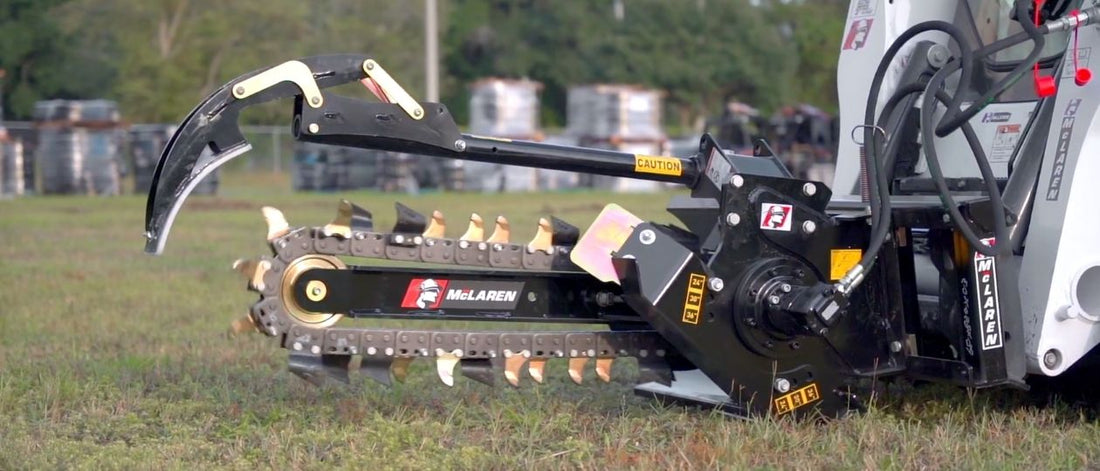
How To Run a Trencher
Share
How To Run a Trencher
Are you looking for a way to trench through hard or rocky ground? A skid steer trencher attachment can help you do just that. In this blog post, we'll show you how to run a skid steer trencher so you can get the job done quickly and efficiently. Stay tuned!
Know Your Trencher
Running a trencher is a fairly straight forward process. You should of course begin by familiarizing yourself with the manufacturers operating manual. Inspect your trencher before each use to ensure it doesn’t not have broken teeth, leaking hydraulics, or any other issue that could cause a hazard.
Be familiar with local regulations and ensure that you are not risking damaging underground infrastructure such as water and electrical lines.
Hooking Up Your Trencher
Naturally the first thing to do is to connect the trencher to your skid steer. As with all universal skid steer attachments, be sure the pins are locked in place before operating the trencher.
Once you have the trencher attachment secured to your skid steer, hook up the hydraulic lines. Skid steer trenchers will have two hydraulic lines, one with a male flat face coupler, and one with a female. Because skid steer trenchers are typically low flow attachments, there is no need for the third case drain line.
Once the trencher is safely connected it’s time to get started. As a general guideline, here is what we recommend:
Start Trenching
Lift the trencher two feet off the ground and engage your hydraulics to start moving the chain. You never want to start your trencher with resistance already on the chain.
With the chain running, use your loader arms to tilt the trencher down on a 45 degree angle. This angle will be used to make the initial cut into the ground. Start your cut ahead of where you would like the trench to start.
Lower the trencher into the ground until you have reached your desired depth. You will also want to see the crumber bar move all the way back.
Start Moving in Reverse
Once you are at your desired depth, you’ll want to tilt the auger to maintain the desired depth while positioning the auger at around ground level to clear the spoils away from the trench. It’s also now time to start moving in reverse.
If your skid steer is equipped with “creep” mode, it’s best to have this turned on. This will allow the skid steer to move back slowly and smoothly while supplying the maximum amount of hydraulic flow to the trencher.
While trenching in reverse, the auger should be kept around ground level. If the auger is permitted to be more than a few inches above ground level, the trenched earth will be more likely to fall back into the trench.
Finish Your Trench
When the desired trench has been completed, lift the attachment out of the trench, stop the chain. The trencher can then removed by disconnecting the universal skid steer quick connect and hydraulic lines. Be sure to clean the trencher and inspect it after use.
And that’s all there is to it! If you are interested in skid steer trenchers have a look at our skid steer trencher collection page today!

